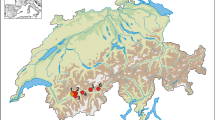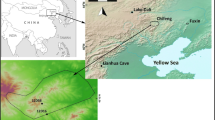Abstract
Most of what is known about the Iron Age in Southeastern Kazakhstan has been learned from kurgan burials and historical accounts describing the largely nomadic lifestyle of steppe populations from the 8th century B.C.E. to the 5th century C.E. Recent archaeological surveys however, are revealing an unexpectedly large number of settlements at the edges of the steppe, along the northern slopes of the Tien Shan Mountains. One of these sites, Tuzusai, has provided a wealth of ceramic finds that offer insight into local pottery production traditions and their social and material contexts. Our preliminary analysis of both pottery and local clay and temper resources suggests that the community at Tuzusai engaged in feasting activities that incorporated a diverse vocabulary of pot forms. The overwhelming majority of these forms appear to have been locally produced using assembly strategies that responded to shortcomings in available raw materials. Given our current understanding of local production resources and the technical difficulty associated with the production of thin walled forms using these materials, we suggest that these ceramics may be high-status goods valued not solely for their function in feasting activities, but for the labor and skill required to produce them.
Similar content being viewed by others
References
L. Yablonsky, in Nomads of the Eurasian Steppe in the Early Iron Age, edited by J. Davis-Kimball, V.A. Bashilov, and L.T. Yablonsky (Zinat Press, Berkeley,CA, 1995), p. 200.
K.A. Akishev and G.A. Kushaev, Drenmaya Kul’tura Sakov i Usurtei Doliny Reki Ili. (Nauka, Alma-Ata, 1963).
C. Chang, in The Archaeology of Power and Politics in Eurasia: Regimes and Revolutions, edited by C.W. Hartley, G. B. Yazicioglu, A.T. Smith (Cambridge University Press, New York, 2012) pp. 122–142.
C. Chang, I.P. Panyushkina, J. Fassbinder, L. Kuhne, M. Heinsch, K. Lyublyanovics, M. Macklin, R. Spengler, W.H.J. Toonen, and P.A. Tourtellotte, in press.
J. Fassbinder, personal communication.
I.P. Panyushkina, in press.
R.N. Spengler, C. Chang, P.A. Tourtellotte, J. Field Arch. 38 (1) 68–85 (2013).
A.M.Rosen, C. Chang, F.P. Grigoriev, Antiquity. 74, 611–23 (2000).
R.N. Spengler, C. Chang, P.A. Tourtellotte, J. Field Arch. 38 (1) 68–85 (2013).
C. Chang, N. Benecke, F.P. Grigoriev, A.M. Rosen, P.A. Tourtellotte, Antiquity. 77 (296) 298–312 (2003).
C.Chang and P.A. Tourtellotte, (field report for the 2013 season).
O.V. Kuznetsova, Izvestia, Seriya Obshestvenni Nauk. 1 (224) 161–168 (2000).
O.V. Kuznetsova, pers. comm.
Environment Research Center, Characterization of Ecosystems of Archaeological Excavations Area in Talgar River Basin. (ENVIRC, Almaty, 1995), p. 7.
B.Machalett, M. Frechen, U. Hambach, E.A. Oches, L. Zoller, S.B. Marković, Quarternary Intl. 152–153, 192–201 (2006).
B.Machalett, M. Frechen, U. Hambach, E.A. Oches, L. Zoller, S.B. Marković, Quarternary Intl. 152–153, 192–201 (2006).
D.V. Abdrakhimov, E.S. Abdrakimova, and V.Z. Abdrakhimov, Glass and Ceramics. 56 (5– 6) 190–193 (1999).
http://www.almatyceramics.kz/ru/page/6
R.E.Grim and N. Guven, Bentonites: Geology, mineraology, properties, and uses. (Elsevier, New York, 1978).
G. A. Kudailulaova, H. Strauss, V. Koeckritz, Acta Geodyn. Geomater. 2 (2)[138], 87–93 (2005).
D.Verbeken, S. Dierckx, K. Dewettinck, K., Appl. Microbiol. Biotechnol. 63, 10–21 (2003).
L. Yablonsky, in Nomads of the Eurasian Steppe in the Early Iron Age, edited by J. Davis-Kimball, V.A. Bashilov, and L.T. Yablonsky (Zinat Press, Berkeley,CA, 1995), p. 233.
M. Jianjun, in The Golden Deer of Eurasia: Perspectives on the steppe nomads of the ancient world, ed. J. Aruz, A. Farkas, E. V. Fino (Yale University Press, New Haven, 2006) 132–145.
F.P. Grigoriev, Pozdnakasoi poselenia Tuzusai (Shymkent and Almaty, 1995).
Author information
Authors and Affiliations
Additional information
A correction to this article is available at https://doi.org/10.1557/opl.2017.3
Rights and permissions
About this article
Cite this article
Heinsch, M., Vandiver, P.B., Lyublyanovics, K. et al. Ceramics at the Emergence of the Silk Road: A Case from Southeastern Kazakhstan. MRS Online Proceedings Library 1656, 187–198 (2014). https://doi.org/10.1557/opl.2014.430
Published:
Issue Date:
DOI: https://doi.org/10.1557/opl.2014.430




